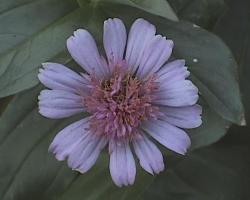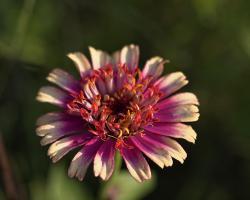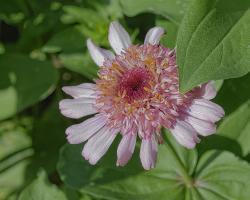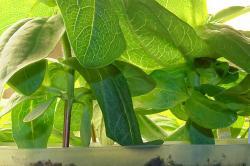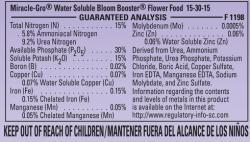Hi Jai,
" How much boron do indoor zinnias actually need? "
Zinnias are "boron pigs" in that they use about twice as much boron as the average plants. The 0.02% Boron in your Miracle-Gro Bloom Booster is standard for most "complete" soluble nutrient products.
However, you may not need to supply extra Boron, over and above what you are currently supplying. (As it happens,
I do have to supply supplemental Boron to my indoor zinnias. Long story.) Do you have an analysis sheet for your water supply, or, if not, can you obtain an analysis for your water supply? It is possible that your water supply contains a trace amount of Boron.
Also, what is the growing medium you are using for your indoor zinnias? Some growing mediums can contain nutrients, including possibly Boron.
Your zinnias, themselves, may be able to tell you if they need extra Boron. Nutrient deficiencies can cause tell-tale symptoms in the plants. Quoting from page 356 in the Zinnia chapter of the book "Nutrient Deficiences in Bedding Plants"
"Boron (B) Deficiency Initial symptoms of boron deficiency develop on the upper leaves (A). Puckering and folding of the fully expanded leaves occurs below the apex. With advanced deficiences, leaves become thick and leatherlike, internodes are short and compact, and the buds abort (B). Symptoms progress to a necrosis of the growing point and tip burn (C). Plant growth is also stunted. The letters in parenthesis refer to the three photographs on that page.
You might be able to google for plant nutrient deficiency symptoms.
Incidentally, depending on your water composition and your growing medium, you might start to see deficiency symptoms of
Calcium. Although it is not present in commercial nutrient formulas, plants actually use and need quite a bit of Calcium. I supply Calcium to my indoor zinnias as soluble Calcium nitrate.
Growing mediums, like the Premier Pro-Mix that I use, contain some Calcium, enough to last a few weeks, which is long enough if you are just starting some plants early to set them out in the garden. But on my very first indoor growing experience several years ago, I encountered severe Calcium deficiency symptoms after a few weeks, so I researched the problem and obtained some Calcium nitrate from a Hydroponics supplier (essentially all hydroponics projects must supply soluble calcium, and calcium nitrate is almost always the form that is used.)
Another indoor zinnia nutrient issue is nitrogen, specifically urea. The Miracle-Gro products contain urea. Microbes in garden soil and some organic growing media break down urea into usable ammonium and nitrate ions. In the absence of soil microbes, the urea
may be unusable by zinnia roots. At least some plants cannot use urea in their root zone. For that reason I use urea-free nutrient formulas on my indoor zinnias.
http://sunbulb.com/info/our-pr...
However, if Miracle-Gro Bloom Booster continues to work fine with your zinnias, then continue to use it. I use Miracle-Gro products in great abundance on my outdoor zinnias. My favorite Miracle-Gro product for in-ground zinnias is Miracle-Gro Tomato Food. Zinnias really "eat up" the extra magnesium in that tomato food formula. The element Magnesium is a vital component of chlorophyll.
There are several more indoor zinnia nutrient issues, but for the time being we will try to decide whether you need to supply Boron to your indoor zinnias and, if so, how to do it. Too much Boron can be quite phytotoxic. We are going for that "happy medium".
ZM (not associated with any product or vendor mentioned or linked)

